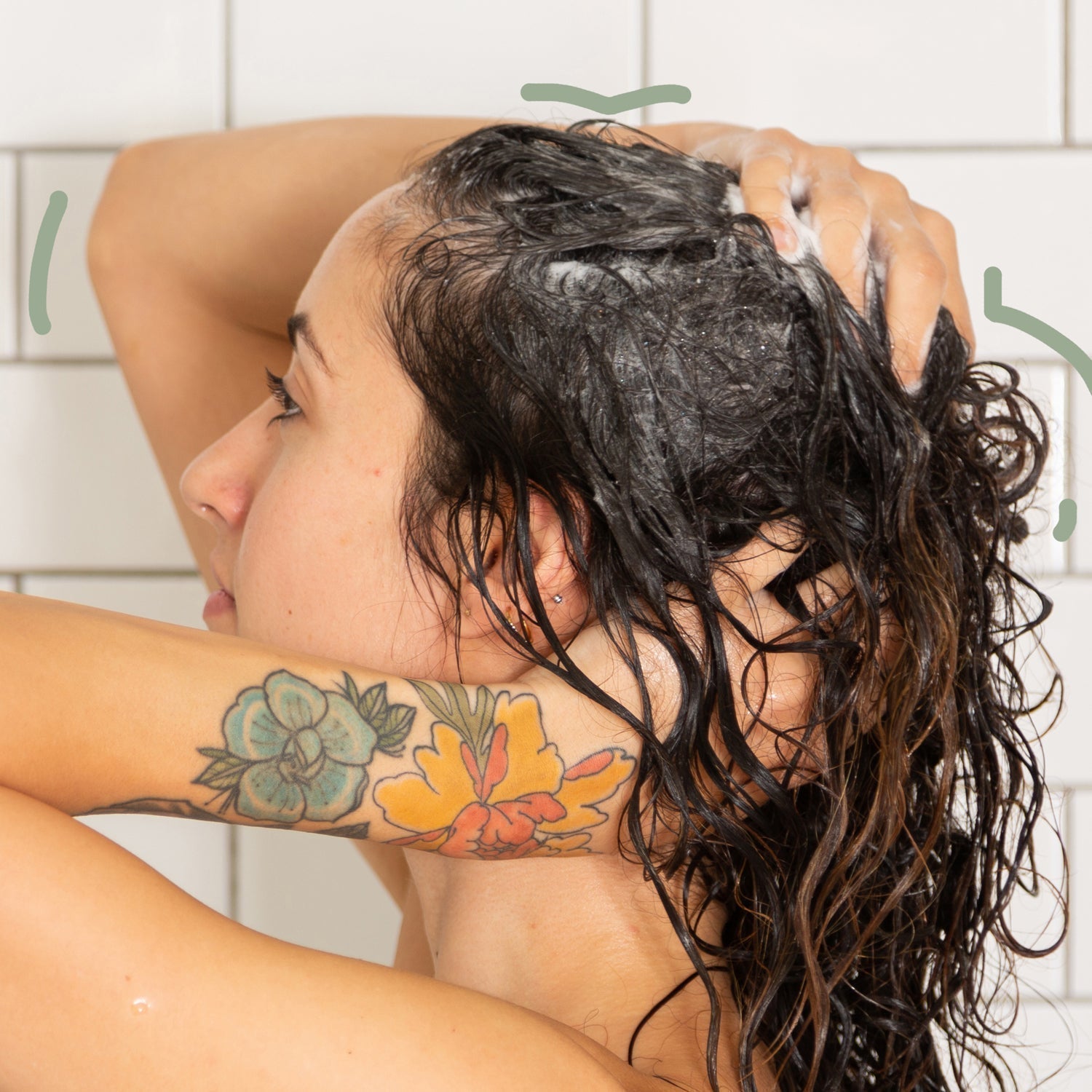Is Ethique sulfate free?
Some of our shampoo bars are sulfate-free, and some contain sulfates. We offer both because different hair types have different needs — curly, coily, and colour-treated hair often responds well to gentler surfactants, while other hair types benefit from the deeper cleanse that sulfates provide.
What are sulfates anyway?
Sulfates are a type of surfactant — the ingredient in shampoo that creates lather and lifts oil and dirt from your hair. There are many different sulfates, and they're not all the same. Some are harsh, some are gentle, and the difference comes down to molecular structure rather than the word "sulfate" itself. We go deeper into the science in our guide to whether sulfates are bad for hair.
Our sulfate-free shampoo bars
If you're looking to avoid sulfates, these are your options:
-
CURL-DEFINING — Formulated for curly, coily, and wavy hair. Gentle cleansing that won't disrupt your curl pattern.
-
REPAIRING — For dry or damaged hair. Packed with mango butter and peach oil to restore softness.
-
GENTLE — Fragrance-free, ideal for sensitive scalps or anyone avoiding essential oils.
-
PURPLE — A toning bar for blonde, grey, and warm brunette hair. Reduces brassiness without sulfates.
All four use a combination of sodium cocoyl glycinate, sodium cocoyl isethionate, and a sugar-derived surfactant called cocoyl methyl glucamide. Still plenty of lather — just from different ingredients.
Our shampoo bars that contain sulfates
The rest of our shampoo range contains sodium coco sulfate, derived from coconut oil. This includes VOLUMISING, CLARIFYING, HYDRATING, SMOOTHING, EVERYDAY SHINE, and SCALP HEALTH.
Sodium coco sulfate isn't the same as sodium lauryl sulfate (SLS), though the names sound similar. SLS uses a single fatty acid — lauric acid — which makes it a powerful cleanser. Too powerful for our liking. Sodium coco sulfate uses a blend of fatty acids from coconut, which makes it milder while still producing that satisfying lather.
We also follow a formulation rule: combine at least three surfactants for a gentler product. One surfactant on its own can be harsh. Two is gentler. Three is better. All our shampoo bars — sulfate and sulfate-free — use at least three.
How do you know which is right for you?
It depends on your hair.
Sulfate-free bars tend to work well for:
-
Curly or coily hair (gentler on curl patterns)
-
Colour-treated hair (though our sulfate bars are also colour-safe)
-
Hair that's prone to dryness
Sulfate-containing bars tend to work well for:
-
Oily hair or scalps that need a deeper cleanse
-
Hair exposed to chlorine, hard water, or heavy product buildup
-
Anyone who prefers more lather
Neither is better or worse. They're different tools. Some people use both — a clarifying sulfate bar occasionally, and a gentler sulfate-free bar for regular washes.
Using sulfate-free bars
Sulfate-free bars behave a bit differently. The bubbles are smaller (not fewer — just smaller) and the bar itself is often harder. A few tips:
- Swipe the bar directly onto wet hair rather than lathering in your hands first. Small circular motions along your scalp work best. Then swipe down the length of your hair to bring the lather through.
- If you have oily hair, shampoo twice. The first wash lifts oil and buildup; the second wash does the actual cleaning with much less product.
Storing your bars
Same rules as all our bars: keep them away from sitting water and let them dry between uses. A tray with drainage or a soap saver bag helps. Bars that stay wet between washes won't last as long.
Not sure where to start?
Our mini bars and duos are a good way to test before committing to a full-size bar. If you try something and it's not right for your hair, our Miracle Workers team can help — just get in touch within six months of purchase.

 Impact
Impact Blog
Blog Store Locator
Store Locator

